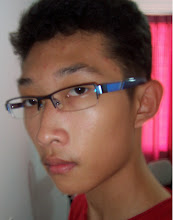 The Fuwa (Chinese: 福娃; pinyin: Fúwá; literally "good-luck dolls" and can be known as "Friendlies"), are the mascots of the 2008 Olympics in Beijing. The designs were created by Han Meilin, a famous Chinese artist. The designs were publicly announced by the National Society of Chinese Classic Literature Studies on November 11, 2005 at an event marking the 1000th day before the opening of the games.
There are five fuwa: Beibei, Jingjing, Huanhuan, Yingying, and Nini. Together, the names form the sentence "北京欢迎你", Běijīng huānyíng nǐ which means "Beijing welcomes you". Originally named 'The Friendlies', they were promoted as 'Fuwa' when there were concerns the name could be misinterpreted.
While originally given artistic licence in his commission, Han Meilin was subsequently requested by officials to include various Chinese design and fauna in the Fuwa. Han Meilin drew 1,000 models of possible before settling on the five characters. He has since disowned the Fuwa and did not include them in his museum.
The Fuwa (Chinese: 福娃; pinyin: Fúwá; literally "good-luck dolls" and can be known as "Friendlies"), are the mascots of the 2008 Olympics in Beijing. The designs were created by Han Meilin, a famous Chinese artist. The designs were publicly announced by the National Society of Chinese Classic Literature Studies on November 11, 2005 at an event marking the 1000th day before the opening of the games.
There are five fuwa: Beibei, Jingjing, Huanhuan, Yingying, and Nini. Together, the names form the sentence "北京欢迎你", Běijīng huānyíng nǐ which means "Beijing welcomes you". Originally named 'The Friendlies', they were promoted as 'Fuwa' when there were concerns the name could be misinterpreted.
While originally given artistic licence in his commission, Han Meilin was subsequently requested by officials to include various Chinese design and fauna in the Fuwa. Han Meilin drew 1,000 models of possible before settling on the five characters. He has since disowned the Fuwa and did not include them in his museum.
Below are 2008 Olympics in Beijing's mascots :
 Name: Bèibei (贝贝)
Gender: Female
Cultural inspiration : Chinese sturgeon; Traditional Chinese New Year decorative picture of lotus
Name: Bèibei (贝贝)
Gender: Female
Cultural inspiration : Chinese sturgeon; Traditional Chinese New Year decorative picture of lotus
and fish; fish design from Neolithic artifacts.
Olymipic ring : Blue
Element : Water
Personality : Gentle, pure
Represented ideal: Prosperite
Represented sport : Aquatic sports
In traditional Chinese culture, the fish represents prosperity, as the character for fish (魚) sounds the same as that for surplus (餘 / 余). The "carp leaping over the dragon gate" is a traditional allegory of following one's dreams and achieving them. The patterns from Beibei's headgear comes from artifacts unearthed at Banpo, site of a Neolithic village of the Yangshao culture.
 Name: Jīngjing (晶晶)
Name: Jīngjing (晶晶) Gender: Male
Cultural inspiration : Giant panda; Song Dynasty lotus-shaped porcelain.
Olymipic ring : Black
Element : Wood
Personality : Honest, optimistic
Represented ideal: Happiness
Represented sport : Weightlifting, judo
As an endangered species, the panda is both a national symbol of China and an international symbol of environmentalism. Jingjing's forest origins also symbolize the harmonious coexistence of humankind and nature.
 Name: Huānhuan (欢欢)
Name: Huānhuan (欢欢)Gender: Male
Cultural inspiration :Olympic flame; Fire design from the Mogao Grottoes.
Olymipic ring : Red
Element : Fire
Personality : Extrovert, enthusiastic
Represented ideal: Passion
Represented sport : Ball sports
Huanhuan represents the passion of sports, the Olympic spirit of "faster, higher, stronger", and the passion of the Beijing Olympics. Huanhuan's headgear comes from a fire design in the Mogao Caves, the best known of the Chinese Buddhist grottoes.

Name: Yíngying (迎迎)
Gender: Male
Cultural inspiration : Tibetan antelope, Tibetan and Xinjiang ethnic costumes.
Olymipic ring : Yellow
Element : Earth
Personality : Lively, vivacious
Represented ideal: Health
Represented sport : Track and field
The Tibetan antelope is an endangered species native to the Tibetan Plateau, known for its swiftness. Yingying's headgear incorporates elements of Tibetan and Xinjiang ethnic costumes.
 Name: Nīni (妮妮)
Name: Nīni (妮妮)
Gender: Female
Cultural inspiration : The swallow; Beijing's shayan kites.
Olymipic ring : Green
Element : Air
Personality : Innocent, joyous
Represented ideal: Good fortune
Represented sport :Gymnastics
The swallow is a messenger of spring and happiness in Chinese culture, and is seen as a symbol of good fortune. The Chinese character for swallow (燕) is also used in Yanjing (燕京), an old name for Beijing; thus the swallow alludes to Beijing. Nini's headgear uses the design of Beijing's shayan kites, which are colourful cross-shaped kites modeled after swallows.
There are 100-episode Olympic-themed cartoon series featuring the Fuwa was released in China, primarily on BTV (Beijing's municipal television network), on August 8, 2007. Titled The Olympic Adventures of Fuwa (Chinese: 福娃奥运漫游记), it was jointly produced by BTV and Kaku Cartoon.





No comments:
Post a Comment